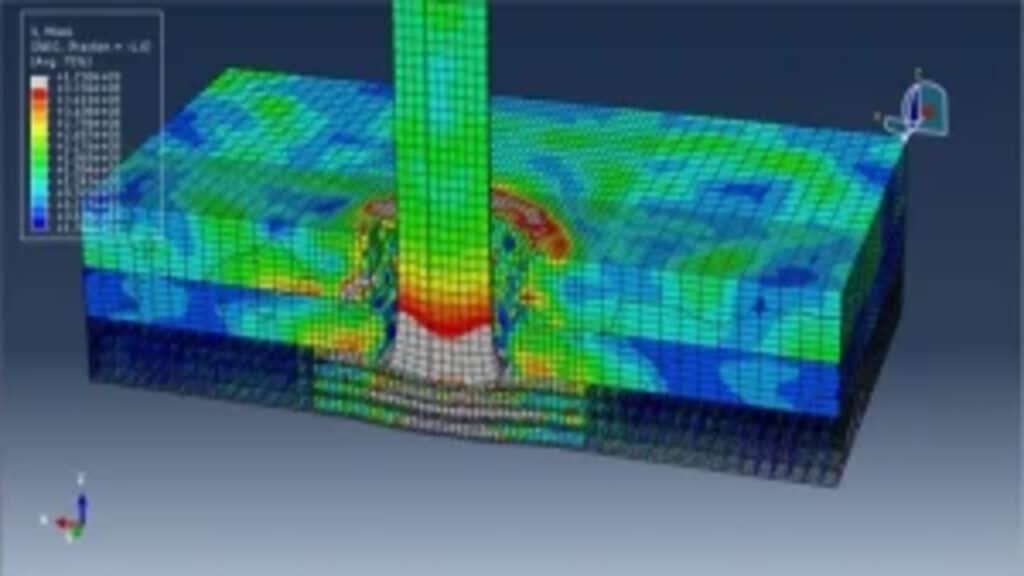


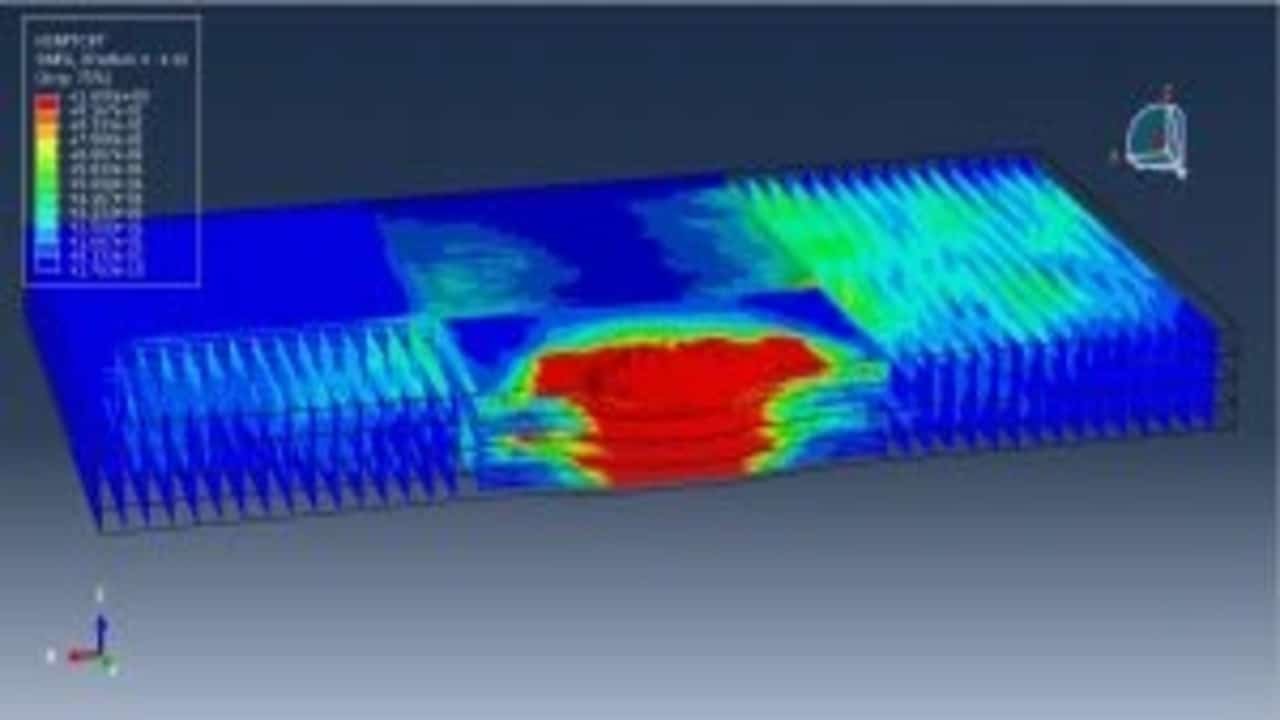
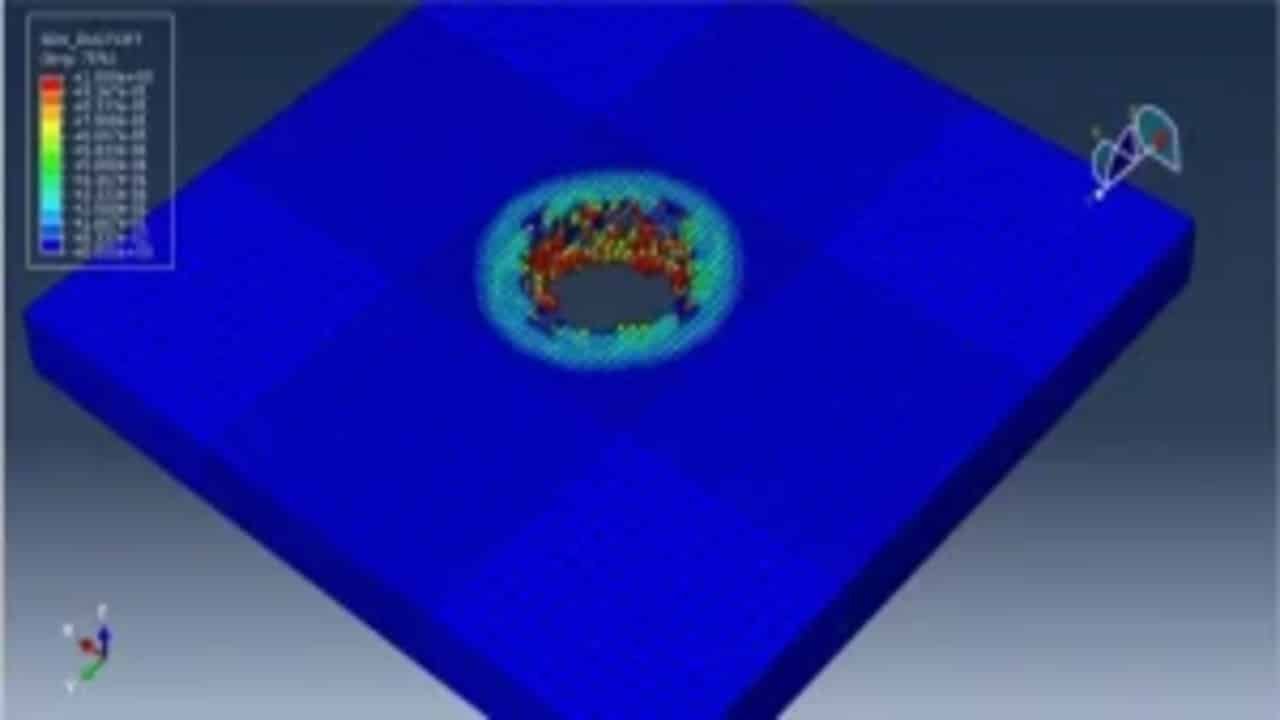
Papers abstract:
At present, the use of refined numerical simulation is gaining more and more importance, especially in extreme load cases where large experimental test programmers are not feasible. A validated numerical methodology can be exploited to investigate critical behavior as a “virtual test”. According to this premise, a numerical investigation is presented in this work to study the ballistic resistance of Kevlar29-Epoxy fabric plates subjected to impacts of small caliber projectiles, armor piercing (AP), ball type, and a blunt shaped projectile (BSP), all with a 7.62 mm diameter. The numerical models were developed using the explicit finite element code LS – DYNA. The composite plate is 5 mm thick, made up of 12 layers. The fabric is impregnated in Epoxy matrix, to guarantee both structural and ballistic resistance, and is a 2D plain-weave. The mechanical properties of the projectiles’ deformable materials were modelled by means of the Johnson-Cook plasticity model, which also includes the failure criterion. The composite plate is modelled using a mixed Macro-homogenous / Meso-heterogeneous approach. In particular, the area around the impact adopts the Meso-heterogeneous modelling, in which the woven yarns and the matrix are separate parts able to interact, to increase the efficiency of the numerical methodology, allowing the modelling of the friction between the yarns, the delamination and the fibre-matrix debonding. This method needs to assign separately the mechanical properties to the fabric and the matrix as well as the damage criteria for the yarns, the matrix and the delamination. In the Macro-homogenous approach, which models the remainder of the composite plate, the yarns and the matrix are considered as a unique homogenous mean, to which equivalent orthotropic mechanical properties of the impregnated fabric are assigned. The numerical investigation mainly focuses on the residual velocity of the impacting projectiles, identifying the ballistic limit of each couple projectile-target.
Product Overview:
This simulation-based tutorial introduces a detailed ballistic impact scenario, modeling a high-speed projectile striking a layered target system of ceramic, aluminum, and composite plates. The workflow aligns with methods derived from experimental studies and advanced numerical techniques. Key simulation steps include:
In this tutorial, high-speed impacts on a layered ceramic-metal-composite system are simulated, according to data from the work of Manes et al.

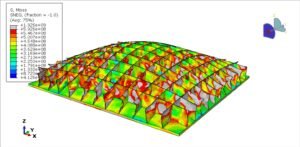
Abaqus
€68,00 €34,00

Abaqus
€77,00 €39,00
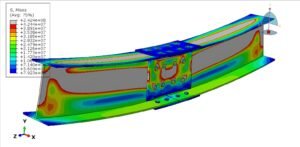
Abaqus
€79,00 €39,00

Abaqus
€75,00 €37,00

Abaqus
€76,00 €38,00
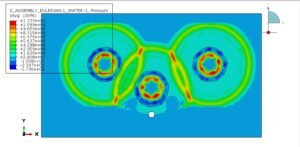
Abaqus
€79,00 €38,00
See more

Want to receive push notifications for all major on-site activities?